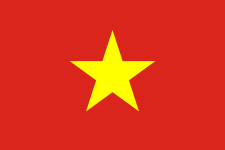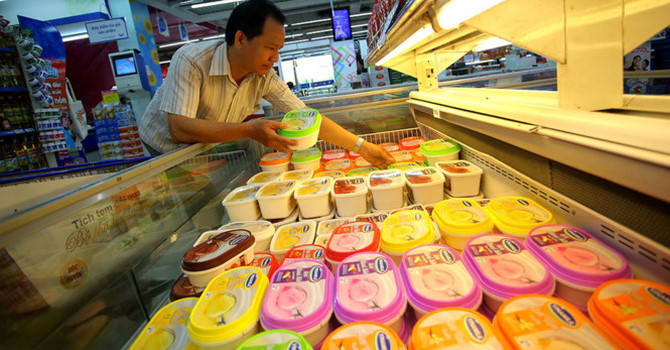Meliá Hotels adds Kobi Onsen Hue to its Vietnam portfolio
Meliá now operates 20 hotels and resorts throughout the country.




The ice cream and frozen dessert market is a lucrative market with value of VND2.620 trillion in 2016, an increase of 13 percent over 2015.

Khanh, an ‘ice cream fan’, who lives in district 7, HCMC, said she buys ice cream daily.
“The leaflets advertising Twin Cows, a new ice cream product, appeared in my apartment block some days ago. At first, I thought this was a foreign ice cream brand, because the design was very good and the images colourful. But later, I found it was a 100 percent Vietnamese brand – Vinamilk,” she said.
Khanh named nearly 10 other ice cream brands which she said ‘are very popular in Vietnam’. Her favorite brand is Häagen-Dazs, but she doesn’t buy it regularly because it is too expensive.
“Each Häagen-Dazs 100ml is sold at VND68,000. So my salary is not enough,” she said.
Vietnamese spending on ice cream remains modest, VND35,000 per head per annum, while the figures are VND122,000 in Malaysia and VND391,000 in Singapore. This means that investors still have big opportunities to develop the market.
This is why most of the world’s best known ice cream brands are present in Vietnam, from BUDS, Häagen-Dazs, Baskin - Robbins, to Snowee, Swensens, Fanny and Monte Rosa.
The rapid and strong penetration of foreign brands has divided the market into two market segments. The high-end segment is the playing field for foreign brands which sell their products at no less than VND50,000-70,000 a 100 ml jar.
Thuy Thuong, an office worker, a fan of Snowee, said her family eats ice cream every weekend. “Snowee’s ice cream is very tasty, but it is too expensive,” she said. “We have to pay VND400,000 each time, too much for dessert.”
Meanwhile, South Korean and Thai brands mostly target lower income and mid-end market segment. The products are available at supermarkets and convenience stores for VND12,000-20,000.
Fresh ice cream can be found mostly at fast food shops of Lotteria, KFC and McDonald’s. An analyst said at the shops, the revenue is even higher than that from main food items.
Despite the presence of many foreign brands, the ice cream market is still controlled by Vietnamese brands.
A report of Euromonitor International showed that Merino and Celano, the two brands owned by Vietnamese KDF Group, now hold the biggest market share of 35 percent, followed by Vinamilk and Thuy Ta.
In 2016, KDF’s net revenue was VND1.397 trillion, a 31 percent growth rate over the year before.
Meliá now operates 20 hotels and resorts throughout the country.
Legendary 400-year-old Parisian restaurant will take over Le Beaulieu for five days in October.
Ultra-luxe hillside residences bolster accommodation offerings at Central Vietnam property.
As droughts and saltwater intrusion devastate the Mekong Delta, many women are forced to seek alternative ways to make a living. This new path may offer a glimmer of hope, but it also exposes their extreme vulnerability.
In the wake of the pandemic, understanding the future of tourism has become more important than ever. To get business back on track and maintain positive relationships with potential travelers, the tourism sector needs to take a deeper look at emerging trends and integrate new insights into products and services as well as marketing and communication campaigns.
Hoiana will allow selected guests to come and enjoy first-class service provided by big names in the international entertainment and hospitality industry.